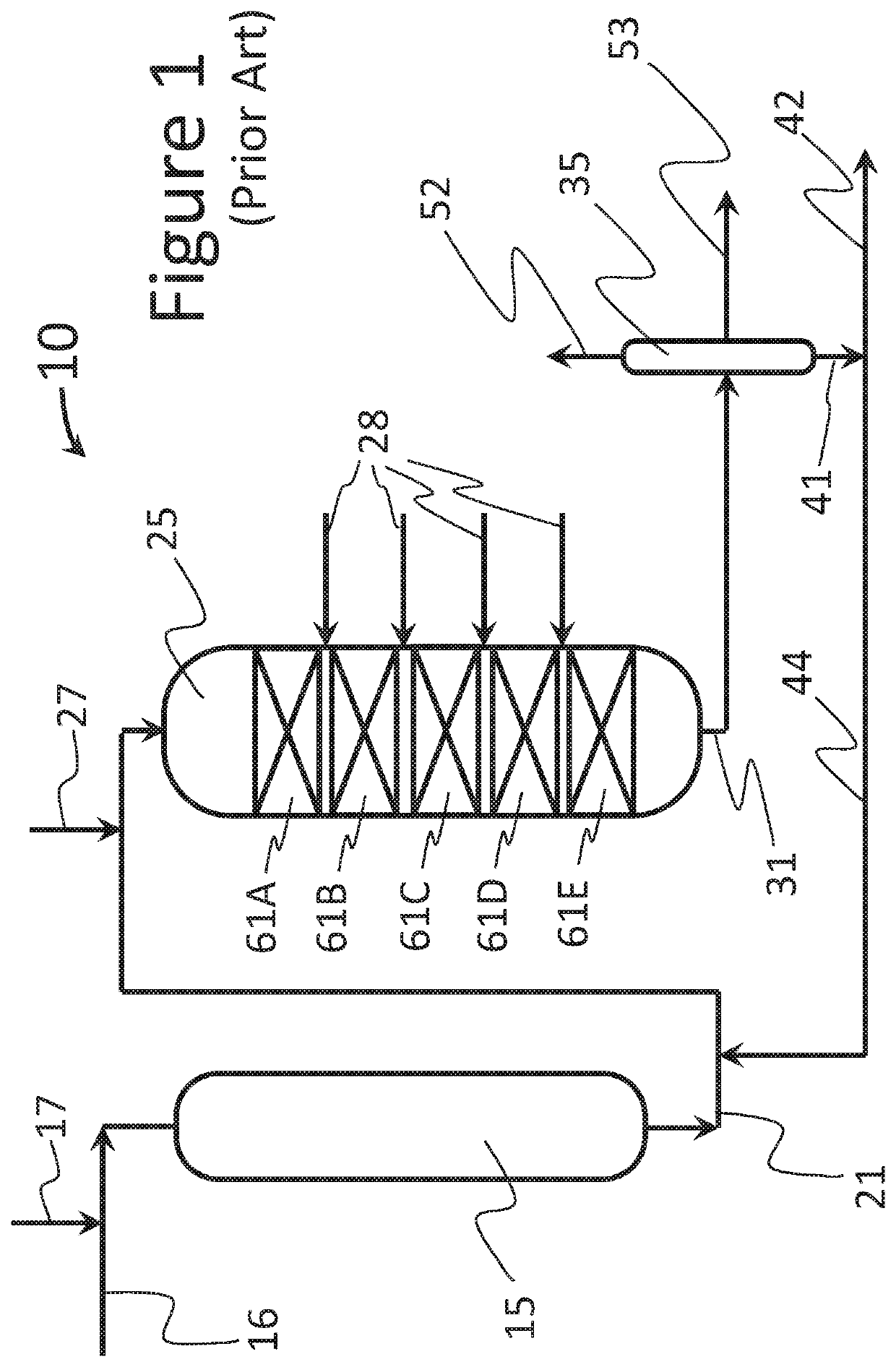Hydrocracking system for producing distillate or naptha
a hydrocracking system and distillate technology, applied in the field of refining hydrocarbons, can solve the problems of not many refinery operations that are not amenable to readily shifting, the current refinery technology for making both diesel and gasoline has very limited ability to alter the product proportions while in operation, and the relative volume bias of gasoline and diesel is not practical in operation, so as to achieve the effect of improving p
- Summary
- Abstract
- Description
- Claims
- Application Information
AI Technical Summary
Benefits of technology
Problems solved by technology
Method used
Image
Examples
Embodiment Construction
[0011]Turning now to the detailed description of the preferred arrangement or arrangements of the present invention, it should be understood that the inventive features and concepts may be manifested in other arrangements and that the scope of the invention is not limited to the embodiments described or illustrated. The scope of the invention is intended only to be limited by the scope of the claims that follow.
[0012]Turning now to the drawings, it should first be understood that in conventional refinery arrangements start the refining process by separating crude oil into constituent parts based on distillation cuts points first using an atmospheric distillation tower (not shown). The various cuts are directed for further processing where the bottom cut, or cuts are forwarded to a vacuum distillation tower (not shown) which cuts the heavy oil into separate distillation fractions. The bottom cuts from the vacuum distillation tower tend to comprise larger and denser hydrocarbon molecu...
PUM
| Property | Measurement | Unit |
|---|---|---|
| temperature | aaaaa | aaaaa |
| time | aaaaa | aaaaa |
| volumes | aaaaa | aaaaa |
Abstract
Description
Claims
Application Information
 Login to View More
Login to View More - R&D
- Intellectual Property
- Life Sciences
- Materials
- Tech Scout
- Unparalleled Data Quality
- Higher Quality Content
- 60% Fewer Hallucinations
Browse by: Latest US Patents, China's latest patents, Technical Efficacy Thesaurus, Application Domain, Technology Topic, Popular Technical Reports.
© 2025 PatSnap. All rights reserved.Legal|Privacy policy|Modern Slavery Act Transparency Statement|Sitemap|About US| Contact US: help@patsnap.com


